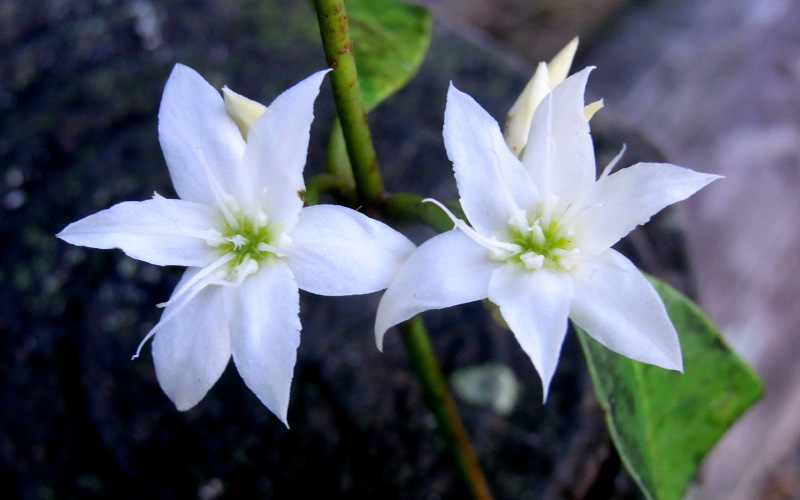
Yellow Sassafras (Doryphora sassafras)
© Pete The Poet
Despite being a very common rainforest plant in New South Wales, it's rare in Sydney. The soils are too poor here, and there's too much fire. The average height here in Wahroonga is about 15 metres. Though I've seen them at least 50 metres tall further north on the ranges. One tall site is Burraga Swamp in the Barrington Tops. This is one of the most successful of NSW rainforest plants. A ubiquitous species, found in lowland and highland forests. It can survive in cold mountain rainforests, as well as coastal areas. It thrives on soils of poor fertility and it can compete in rainforests of great diversity on the more fertile volcanic soils. An all-rounder with relatively thick bark to protect itself from fire. Sub-tropical, warm temperate, cool temperate and dry rainforest suit it well. It will grow in drier areas with less than 1000 mm of rain per year. Or in sites with double that amount. A most adaptable species. The leaves have delightful nutmeg scent. In nature, if you can adapt to change, then you are likely to succeed and prosper. Nearby are other warm temperate trees, such as Coachwood, Lilly Pilly, Jackwood, Celerywood, Guioa, Sandpaper Fig and others. The local council sign suggests that the Koda is here. I saw them as well as the Guioa. Good to see the Celerywood and a very fine old Jackwood, growing today in Sydney. The tree produces flowers in the coldest time of the year. There appear to be six petals. I thought that was a feature of the Monocotyledons, (such as orchids). And Dicotyledons such as this have flower parts in multiples of four and five. Maybe the "petals" aren't petals. Another thing I seem to be confused about. These flowers are pollinated by mosquitoes, there's plenty of them in Sydney. A few years ago I phoned the Royal Botanic Gardens. The lady on the phone was a strong willed person. She was dogmatic repeating to me "there are no rainforests in the Sydney region - there are no rainforests in the Sydney region". She did say, however, "there are some rainforest species growing next to creeks". The last time she said "no rainforests", I could imagine her pulling a face and gritting her teeth. She was so angry, she was about to explode. She was certain she was right. This rainforest is a small remnant, growing on volcanic soils in the suburb of Wahroonga. The geology of the Sydney region is a fascinating subject in itself. Permian coal down low, Narrabeen Group of sedimentary rocks above that. Hawkesbury sandstone above that and the Mittagong Formation and Wianamatta shales on top. The rainfall here is around 1400 mm per year. A diatreme means "two holes", it is a secondary explosion on the side of a volcano. This diatreme pipe was around 200 metres wide, full of volcanic rock. And this occurred in the Jurassic, a little later than the formation of the Hawkesbury sandstone. The shattered volcanic rock here is referred to as "breccia". Volcanic soils are usually considered more fertile than sedimentary rocks. And because of this volcanic action, this rainforest exists. There are few places in Sydney where you can see Jackwood, Guioa, Sassafras, Koda and Scrub Turpentine. I heard a rainforest pigeon here, I think it was the Green wing pigeon. That's a seldom noticed bird in Sydney. For a moment I thought I was up the north coast somewhere.
Photo taken on 5 Jul 2013
Photograph location coordinates are -33.735313:151.10854.